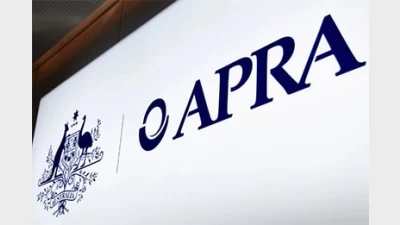Superannuation funds look to leverage off of technological advantage


On the back of strong investment returns, recent years have seen technology providers to the super industry enjoying funds’ ability to invest in their products and truly innovate their member offerings.
Of course, the story for 2008 is somewhat different. Investment markets are volatile and account balances are suffering — hardly the environment one would think conducive to technology spend.
But according to Ian Mathieson, chief executive officer of DST International’s Australia and New Zealand arm, such tough times actually represent significant opportunity.
“Right across the financial services marketplace, recent years have seen people become far more conscious of their spend and the value they’re getting out of that spend,” he said.
“But while there is definitely more caution out there at the moment, we believe that we should see a positive impact on our business from the current environment, and not a negative one.”
Mathieson attributes that positive impact to business models.
“Our business model is about engaging our clients and showing them that our service is more than technology provision,” he said. “It’s about reviewing their current processes and re-engineering when necessary.
“For us, it’s not technology that is the silver bullet, it’s the way that technology is used.”
Similarly, Ken Galbraith, managing director of technology and administration provider Financial Synergy, said that the unsettled markets of 2008 had done little to change how funds were viewing their technology needs.
“There has been a greater focus on back-office cost savings for a number of years now, so that is nothing new,” he said. “Even as far back as 2003, we were selling based on efficiency, and that is still the case.”
Instead, Galbraith said that funds’ focus was on organic growth of their funds under management and on retaining their existing membership base. What impact there has been, from the perspective of technology provision, has been based on awareness.
“This year’s market volatility, growth in the number of self-managed funds out there and legislative change have combined to mean that there is a greater member awareness of superannuation and the value that it represents,” he said.
“For super funds, that awareness has created a touch point that didn’t exist a number of years ago and has meant that members are relying on funds for information and education more and more.
“Until recently, superannuation was a commodity,” continued Galbraith. “A person’s contribution appeared on their payslip and then disappeared into their fund, and that was the end of it.”
However, Galbraith added that with funds now providing more services, this was no longer the case.
“There is now a strong need for funds to differentiate their services,” he said. “And this places more emphasis on the platforms being used and on the technology providing them.”
But putting the effects of investment markets aside, it seems clear that the goals for technology remain the same — efficiency and cost saving. Yet for Mathieson, though technology providers have ticked off many of the boxes on the way to this goal, there remains room for improvement.
“Twelve months on, I don’t think providers have ticked off anywhere near enough of the boxes they need to,” said Mathieson.
“There continues to be a lot of talk and airplay on straight-through-processing (STP), but realistically, what the industry has done with respect to STP has been pretty poor.”
Mathieson said that super funds and technology providers would only get the sort of gains people were looking for with STP once there was total co-operation across all segments of the industry.
“And that means total co-operation between funds, banks, custodians and right the way through to the distribution end of the process,” he said. “That’s where we can provide the best cost savings to the end user — the superannuant.”
According to Galbraith, the greatest gains in the 2007-08 financial year has been in automation, the availability of real-time and online information and adviser facilities based on self-managed superannuation fund (SMSF) growth.
“When it comes to STP, we have a number of solutions in place that significantly reduce overheads for our clients,” he said.
“And that is where much of our emphasis will remain. There are big opportunities for errors to be made at the end of the process, so the use of automation in these areas lowers administration effort and, more importantly, lowers that error risk.”
For David Mendelovits, business development manager for Supercorp, the focus for improvement continues to be web related.
“A great deal of our Supervisor II focus continues to be on the web,” he said.
“Core parts of our new development include overall web access, the ability for users to access the administration engine remotely and improvements in terms of the platform’s general look and feel.”
And when asked where the most value was to be gained, where funds should have their emphasis so that efficiency gains could best correlate to decreased costs, Mendelovits pointed to interoperability.
“I’d say the greatest efficiency gains, and therefore the greatest cost savings, are to be had from focusing on interoperability between products,” he said.
“Platforms need to be able to integrate with workplace systems, customer relationship management (CRM) systems and so on. As an integrated system, Supervisor II is able to fulfil this role [whereas] a number of our competitors are just member systems. That kind of interoperability is essential.”
However, it seems that platform and system interactions with the various parties involved in the superannuation transaction are top of mind for Galbraith as well. He said that though a number of things had come out of the last 12 months for Financial Synergy, these interactions remained most important.
“For us, the target area has to be workplace efficiency and an automated and integrated workflow,” he said. “Funds aren’t going to get a lot of efficiency gains from pure back-end processing.
“An automated workflow is about more than handling paperwork, scanning documents and then escalating from deviations,” continued Galbraith. “CRM services have to be a part of the mix as well.
“Funds now have huge amounts of information to deal with in addition to increasing demand from members for both information and education. CRM systems are essential.”
Interestingly, Mathieson’s view on where efficiency efforts should be focused is not pointed at any specific technology or system improvement. Instead, he suggests technology providers look to the end user — the fund members themselves.
“For those funds looking for value, the biggest gains are found by going back to the end client and asking them,” said Mathieson. “This is something that we haven’t done well as an industry. We’ve made too many assumptions.
“Now is the time to focus on the end user and to discover what it is they want,” he continued. “That may be web access, or it may not. It may be something completely different, but that is where the technology spending needs to be.”
Of course, web access, STP and automation represent but a few of the means by which technology providers are seeking efficiency and cost savings for super funds. There is yet another to add to the list — service oriented architecture (SOA).
But while SOA has been flagged as the next big thing for technology and the super industry for a number of years now, Galbraith does not see it as the key achievement others have intimated.“SOA is important, but in itself doesn’t deliver anything,” he said.
“SOA provides a platform where applications, improved web services and other tasks can be integrated. “So while we’re heading down that path as an industry, it’s one of those technology areas that is much more about how you provide it rather than just providing it.”
Alternatively, Mathieson said that he believed that most large vendors had SOA high on their priority lists.
“That means it is being seriously considered, in progress or already done,” he said. “The degree of completion varies.
“SOA is definitely important because it creates an environment that is much cheaper from the software vendor’s perspective and for the end user,” continued Mathieson.
“But bear in mind that there are many funds in the marketplace that are continuing to use older products.”
And for Australian super funds, this seems to be the key issue. It is no secret that the newly competitive marketplace brought about by Choice of Fund has many funds scrambling to get adequate technology in place.
However, the fact remains that legacy systems persist and that a transition to a new platform is rarely easy.
So for those funds looking at a technology upgrade, what is the message from providers?
Mendelovits suggests fund executives keep in mind the reasoning behind any upgrade decision.
“People are investing in a new system so they can re-engineer their existing processes,” he said. “And they’re looking towards the improvement that can be gained from such efforts.”
But Mendelovits also admitted that the question of when to upgrade would always be made more difficult by the rate at which administration and service technologies were improving.
“Funds should probably be looking at a 10-year timeframe,” said Mendelovits.
“But at some point, you’ve got to put a stake in the ground,” he continued.
“At some point, funds have to bite the bullet and replace their existing systems knowing full well that there will be new technologies along two years later.
“That plunge has to be taken.”
Galbraith, on the other hand, views legacy systems remaining within the industry more favourably.
“Superannuation in Australia is a mature market and many of the older systems and processes continue to work for that reason,” he said.
“So if funds are looking to improve their technology, then I’d say it’s more important to develop leading edge delivery systems rather than back-end processes that really haven’t changed for years.
“These are systems and processes that can be migrated slowly,” Galbraith continued. “So I really don’t see the need to re-write them into new languages just for the sake of it.
“That will happen, but there’s no need to race into it when it can be done in a much slower and safer manner.”
From Mathieson’s perspective, though he believes some form of platform upgrade was necessary for all funds in the lead up to choice, the decision to undertake a complete upgrade will always be huge.
“Realistically, the gains have got to be a quantum leap for a fund to jump onboard that kind of overhaul,” he said.
“And unfortunately, the disturbance that it represents is often reason enough for funds to stay with their current platform and maintain legacy systems.”
For Galbraith, if legacy systems can interface with modern platforms at the front-end, then a gradual upgrade is sufficient.
“But if that is not the case, then yes, you’re looking at a total system change,” he said.
“At that point, if we’re selected to replace a legacy system, then there’s a lot of rigour around the integration and transition process,” Galbraith continued.
“We aim to minimise disturbance to the fund’s administration if at all possible, but unfortunately, there aren’t any shortcuts.”
Yet while platform upgrades and the need to reconcile new and old technologies will remain a theme for technology provision, it seems its future will be dictated by competition.
And in the first instance, consumer demand for services from their super fund should provide the lead.
Mendelovits said that he could already see consumer demand for various super applications increasing.
“Funds offering ATM access to pension accounts, for example,” he said.
“Baby boomers tend to be comfortable with technology and competent with its use. So as they reach retirement, or even if they continue to work, it’s necessary to provide them with its benefits,” continued Mendelovits.
“In the case of real-time access to account balances and so on, they may not make use of that technology every day, but it is becoming essential to have those kinds of regular updates available.”
According to Galbraith the technology for superannuation services akin to Internet banking and share trading is ready and waiting.
“We’re not very far off being able to provide a fund’s members with online products that could deliver a comparable level of service to online banking,” he said.
“And the demand is almost there now. We’re starting to get the feeling that members are looking for that level of service.
“There certainly aren’t any barriers here from the technology perspective.”
However, the competition driving technology provision to the super industry is not limited to the client space. Consolidation continues to occur for super funds and technology providers alike and the trend seems set to continue.
But could we reach a stage where technology, administration and even custody are services offered by a single provider?
Technology providers seem divided on the issue.
Despite Financial Synergy’s provision of both administration and technology to the super industry, Galbraith said that he could not see such a consolidation happening.
“Financial Synergy sits in both the administration and technology worlds and we looked at expanding into custody some years ago,” said Galbraith.
“But from a legislative and technological point of view, that kind of package becomes quite difficult to deliver.”
Alternatively, Mendelovits admitted that technology providers represented a good link between service providers, adding that Supercorp was itself looking at a move to administration.
“That move will be towards the administration of small funds and SMSFs,” he said.
“The heart of the business will continue to be software provision,” Mendelovits added.
“But by offering both administration and technology to clients, we can better feel the pain of any problems that arise and better understand where they might lie.
“We can get a real-life view that is invaluable input for our final product.”
But for Mathieson, a consolidated package of technology, administration and custody services is not only possible, it’s likely.
“The current model is inefficient,” said Mathieson.
“Potentially, there’s a role for the larger and more dominant players to provide software and other services, including custody,” he continued.
“It would probably take an existing custodian or administration provider to make that first step, but I think it’s a possibility.”
Mathieson added that the chance a consolidated service provider would have difficulty focusing on such specialised businesses was not a concern.
“Look at administration as a broader subject,” he advised. “Whether custody or administration, it’s still reporting, record keeping, processing and so on. It’s still administration.
“I think the greater danger is that we become too specialised. Our market can certainly support broader based administrators.”
So what next for technology? In the midst of market volatility, is it a case of weathering the storm or, as Mathieson suggests, capitalising on opportunity?
According to Galbraith, there is no need for technology providers to change their strategies based on investment markets.
“Yes, there is fluctuation in the market, but demand for technology and the solutions it provides is as strong as ever,” he said.
“The focus should remain on the demands of members and the services funds are offering.”
Mathieson reiterated that investment market volatility was not something DST International was concerned about.
“No one worries about bringing efficiencies when things are going well,” he said. “After all, what difference do small gains make when markets are buoyant and performing well?
“We’re looking at the current situation as a significant opportunity,” said Mathieson.
“Times like this differentiate various market participants, differentiate those just offering technology and those leaving clients on their own.”
Recommended for you
Jim Chalmers has defended changes to the Future Fund’s mandate, referring to himself as a “big supporter” of the sovereign wealth fund, amid fierce opposition from the Coalition, which has pledged to reverse any changes if it wins next year’s election.
In a new review of the country’s largest fund, a research house says it’s well placed to deliver attractive returns despite challenges.
Chant West analysis suggests super could be well placed to deliver a double-digit result by the end of the calendar year.
Specific valuation decisions made by the $88 billion fund at the beginning of the pandemic were “not adequate for the deteriorating market conditions”, according to the prudential regulator.












